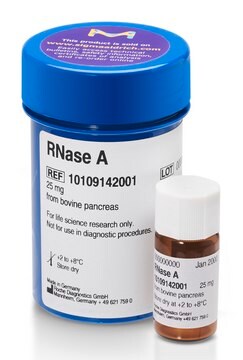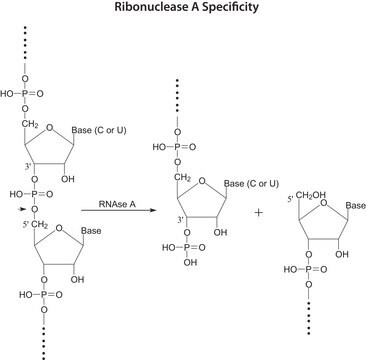537059
Propidium Iodide
Membrane impermeable DNA intercalator.
Sinónimos:
Propidium Iodide
About This Item
Productos recomendados
Quality Level
description
RTECS - SF7949600
form
solid
manufacturer/tradename
Calbiochem®
storage condition
OK to freeze
protect from light
color
dark red
input
sample type intact cells
fluorescence
λex ~536 nm
λem ~617 nm
shipped in
ambient
storage temp.
2-8°C
SMILES string
[I-].I.[N+](CCCN1C2=CC(=N)C=CC2=C3C(=C1c4ccccc4)C=C(C=C3)N)(CC)(CC)C
InChI
1S/C27H33N4.2HI/c1-4-31(3,5-2)17-9-16-30-26-19-22(29)13-15-24(26)23-14-12-21(28)18-25(23)27(30)20-10-7-6-8-11-20;;/h6-8,10-15,18-19,29H,4-5,9,16-17,28H2,1-3H3;2*1H/q+1;;/p-1
InChI key
XJMOSONTPMZWPB-UHFFFAOYSA-M
General description
Biochem/physiol Actions
Membrane impermeable DNA intercalator
Warning
Preparation Note
Reconstitution
Other Notes
Crompton, T., et al. 1992. Biochem. Biophys. Res. Commun. 183, 532.
Darzynkiewicz, Z., et al. 1992. Cytometry13, 795.
de Caestecker, M.P., et al. 1992. J. Immunol. Methods154, 11.
Pollice, A.A., et al. 1992. Cytometry13, 432.
Legal Information
signalword
Warning
hcodes
Hazard Classifications
Muta. 2
Storage Class
11 - Combustible Solids
wgk_germany
WGK 3
flash_point_f
Not applicable
flash_point_c
Not applicable
Certificados de análisis (COA)
Busque Certificados de análisis (COA) introduciendo el número de lote del producto. Los números de lote se encuentran en la etiqueta del producto después de las palabras «Lot» o «Batch»
¿Ya tiene este producto?
Encuentre la documentación para los productos que ha comprado recientemente en la Biblioteca de documentos.
Los clientes también vieron
Nuestro equipo de científicos tiene experiencia en todas las áreas de investigación: Ciencias de la vida, Ciencia de los materiales, Síntesis química, Cromatografía, Analítica y muchas otras.
Póngase en contacto con el Servicio técnico









